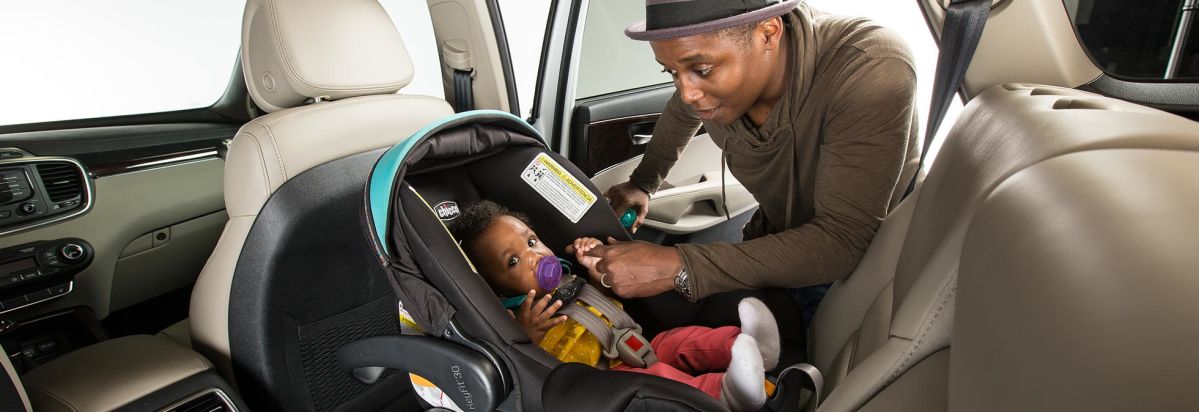 Car seat safety is a hot topic, as it should be. I spoke with Marie Crew, the Director of Safe Kids Alabama, about the top six mistakes she sees around car seats. Before going into these, Marie emphasized a few basics, such as the fact that parents need to be their own advocates. Every car seat has vital information included in the stickers on the seat, the manual included in the box, and on the manufacturer’s website. By familiarizing themselves with these things, parents can learn what they need to keep their children safe in that seat, since car seats vary greatly.
Car seat safety is a hot topic, as it should be. I spoke with Marie Crew, the Director of Safe Kids Alabama, about the top six mistakes she sees around car seats. Before going into these, Marie emphasized a few basics, such as the fact that parents need to be their own advocates. Every car seat has vital information included in the stickers on the seat, the manual included in the box, and on the manufacturer’s website. By familiarizing themselves with these things, parents can learn what they need to keep their children safe in that seat, since car seats vary greatly.
Car Seat Safety :: Six Common Mistakes
1) Children are either unrestrained or in inappropriate seats.
The emergency department at Children’s of Alabama still sees unrestrained kids come through. This includes children who are strapped into car seats but whose seats aren’t strapped into the vehicle. It’s also vital for children to be in a seat rated for their size. Infants outgrowing bucket seats but being kept in them for convenience is an unsafe practice Safe Kids Alabama sees regularly.
2) Children are turned forward facing too soon.
There are reasons it is recommended that children under two years old are kept rear facing, and the true recommendation is to keep children facing that way as long as their seats allow it. In an accident, the impact to a child who is rear facing is absorbed by the car seat, whereas a forward-facing child is jerked forward, causing a larger impact on the head, neck, and spine.
3) Parents still use car seat anchors once the child surpasses the weight limit.
Car seat anchors are great, but there is a point where they aren’t enough. Each seat is rated differently, but here’s an example: A seat may say the anchors have a 65 lb. weight limit, which includes the seat and the child. In the case of a crash, the child who is past the weight limit is not well protected. Instead, the car seat should be installed with the seat belt, and if forward facing, use the tether strap as well.
Speaking of the tether system, always use the tether that goes over the back of the seat with the seat belt to attach the car seat to the vehicle when forward facing. Adding the tether decreases forward head movement by 4-6 inches in a crash. That’s a very significant number, especially when talking about young children.
4) Children are graduated to a seat belt too soon.
Seat belts are designed for adults. As much as children may fight boosters and as much as parents may consider them an inconvenience, the fact that seat belts aren’t made for children can’t be ignored. Marie shared with me the critical problems she sees when children are in seat belts too early.
Without a booster, a chest strap cuts across a child’s neck. The discomfort causes the child to move the strap behind, causing the lap belt to move up the stomach. In a crash, the lap belt causes internal injuries because of the force. A child may look fine at the scene, but these injuries can bleed out, creating a very dangerous situation. In other cases, children can be ejected from an adult seat belt.
Repeat: Seat belts are designed for adults. Don’t skip the booster.
5) Parents don’t wear seat belts.
Teaching children that seat belts protect them is a good thing. We must lead by example.
Current Alabama law requires everyone in a vehicle – including back seat passengers – to wear a seat belt.
6) The driver puts the child in an unsafe situation by driving distracted.
Distracted driving has become a major health risk in the United States, surpassing DUI as the leading cause of car accident deaths. Most people aren’t going to drink alcohol and then drive their children around. They will, however, strap their kids in the car and spend their time behind the wheel talking or texting. This simply isn’t fair to our children or to the others on the road. It is also important to lead by example since our children will one day be drivers themselves. If we want them to focus on the job of driving, we must do the same. (If you are struggling with the addiction of distracted driving, check out a BMC post on breaking the habit.)

It’s not about the car seat.
I did ask Marie about car seat recommendations. She said the seat that fits your car and your child and that you commit to using correctly each and every time is the seat for you. Pay attention to the expiration, and don’t buy a used seat unless you know its entire history. Car seat safety is about responsible use more than it’s about the brand, so get what works for you.
And if you have questions about the correct type car seat needed for your individual child or questions specific to your individual car seat and your vehicle, child passenger safety experts at Children’s of Alabama offers telephone consultations and virtual car seat education, while in-person car seat checks are on hold because of COVID-19 social distancing precautions. Virtual car seat education utilizes a merged reality technology that is available with any smart phone or table a caregiver has. Parents and caregivers can call 1-800-504-9768 or 205-638-9900 to speak with a certified Child Passenger Safety Technician at Safe Kids Alabama. The telephone consultations are offered Monday – Friday, 8:30 a.m. – 4:30 p.m. For more information, visit www.childrensal.org/ChildPassengerSafety.
One last reminder . . .
Children are at a heightened risk of heatstroke death in vehicles during the sweltering summer months, but they are never not at risk.. Never leave your child in a vehicle unattended for even a minute. Please use reminders to make sure a child is not accidentally left in a vehicle. Knowledge is Power :: National Heatstroke Prevention Day
Additional Resources
The Safer Car :: Parent Central
Safe Kids Ultimate Car Seat Guide











